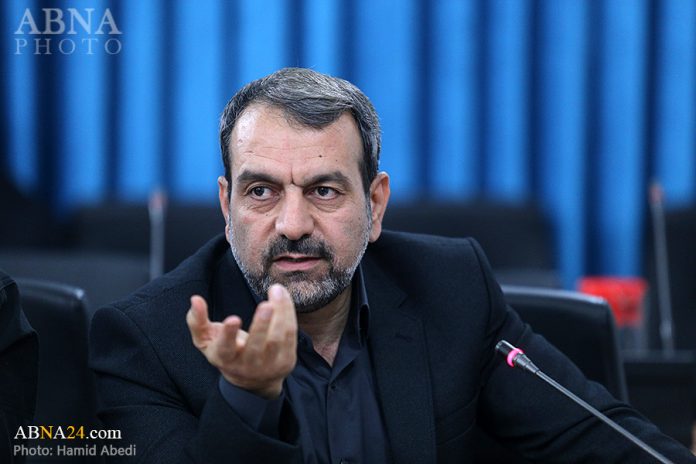According to the Department of Public Relations of the Research Institute for Islamic Culture and Thought, a scientific seat named “The Martyrdom of General Qasem Soleimani; Opportunities and Challenges” was held by the Center of Politics Studies in Wednesday, January 8th in the Research Institute.
In this scientific seat that a number of faculty members of the Institute did presented their lectures, Dr. Abdul-Vahab Forati, referring to the legacy of General Soleimani noted that: “The recent war in the region was much more complex and widespread than the war with the Ba’athist regime, because Khorramshahr was a ruined city and we were able to capture it by fire. But Aleppo had four million inhabitants, and liberating such a city was an unlimited sensitive and difficult work. According to one military expert, one day of the Syrian war was even harder than two months of the imposed war by Iraq.”
Dr. Forati added that: “More than 80 nations entered Syria to overthrow Bashar al-Assad and spent about 40 billion dollars for bribing officials and even soldiers. Therefore when the war began, Assad faced a structure that was empty from the inside. Many Islamic countries raised large sums of money for the Mujahideen, for example only in Kuwait, an amount of 20 million dollars was raised just in one night. Lots of fatwas were issued in one month to stimulate people to fight against Syria or sponsor one soldier on the front for one month. ”
He then referred to the strategy on the enemy and added that: “Creating small groups in Syria under military battalions and turning them over to a force like the Al-Nusra Force was one of the enemy’s strategies. They decided to set up an independent local government on each front, and every three local governments would shape a main government. But by the death of Omar al-Baghdadi and the coming to power of Abu Bakr al-Baghdadi, he founded his own government and took everyone by surprise.”
Dr. forati then speaking about the attendance of General Soleimani in Syria noted that: “On the sixth month, at the request of Bashar al-Assad, Soleimani arrived in Syria, where he and his soldiers initially entered Syria under the pretext of a pilgrimage, but as the crisis turned out to be more serious in the following year, they also entered the battle.The Syrian army was not fit to fight ISIL because it had learned only the classical warfare and killed a number of people alongside the enemies, which increased the number of opponents. As a result, Commander Soleimani decided to implement the Lebanese model in Syria.”
He added: “At the beginning of the Iran-Iraq war, some Iranian Mujaheds went to Lebanon to fight with Israel, but Imam Khomeini ordered their return and said that the pass toward Quds passes through Karbala. Then only some troops were scheduled to be present in the area to train Lebanese forces.”
According to this faculty member of the Research Institute for Islamic Culture and Thought, “from the third year onwards, there was one incident and that was the emergence of multinational forces that came together and fought with calls from Iran, the Shiites of Afghanistan, Pakistan, Syria, Lebanon, Iraq and Iran. In the Shiite front, although the multinational forces did not have a common language and did not speak predominantly Arabic, but all of them under the command of Commander Soleimani, become more and more united, which was surprising to Americans. On the other hand, in the Salafi front, although multinational forces and were largely Arabic speaking, they diverged from time to time and were divided into small groups because the most important characteristic of Takfir was that it always produces antithesis.”
Dr. forati finally noted that: “Today, without the presence of General Soleimani, the force of resistance knows what to do because it can provide itself financially and has its own tactics, in other words, Soleimani has multiplied himself in the region.”




